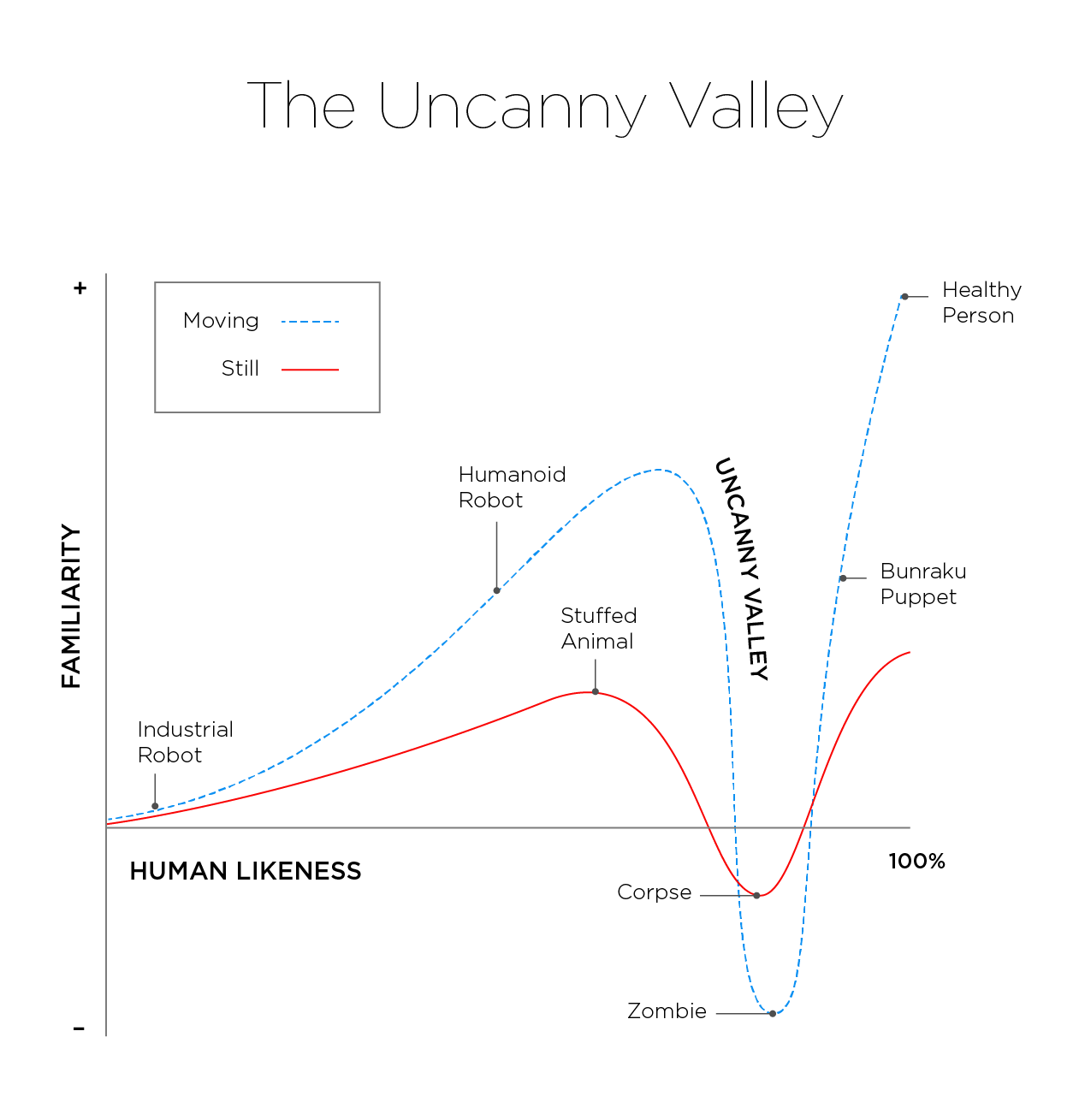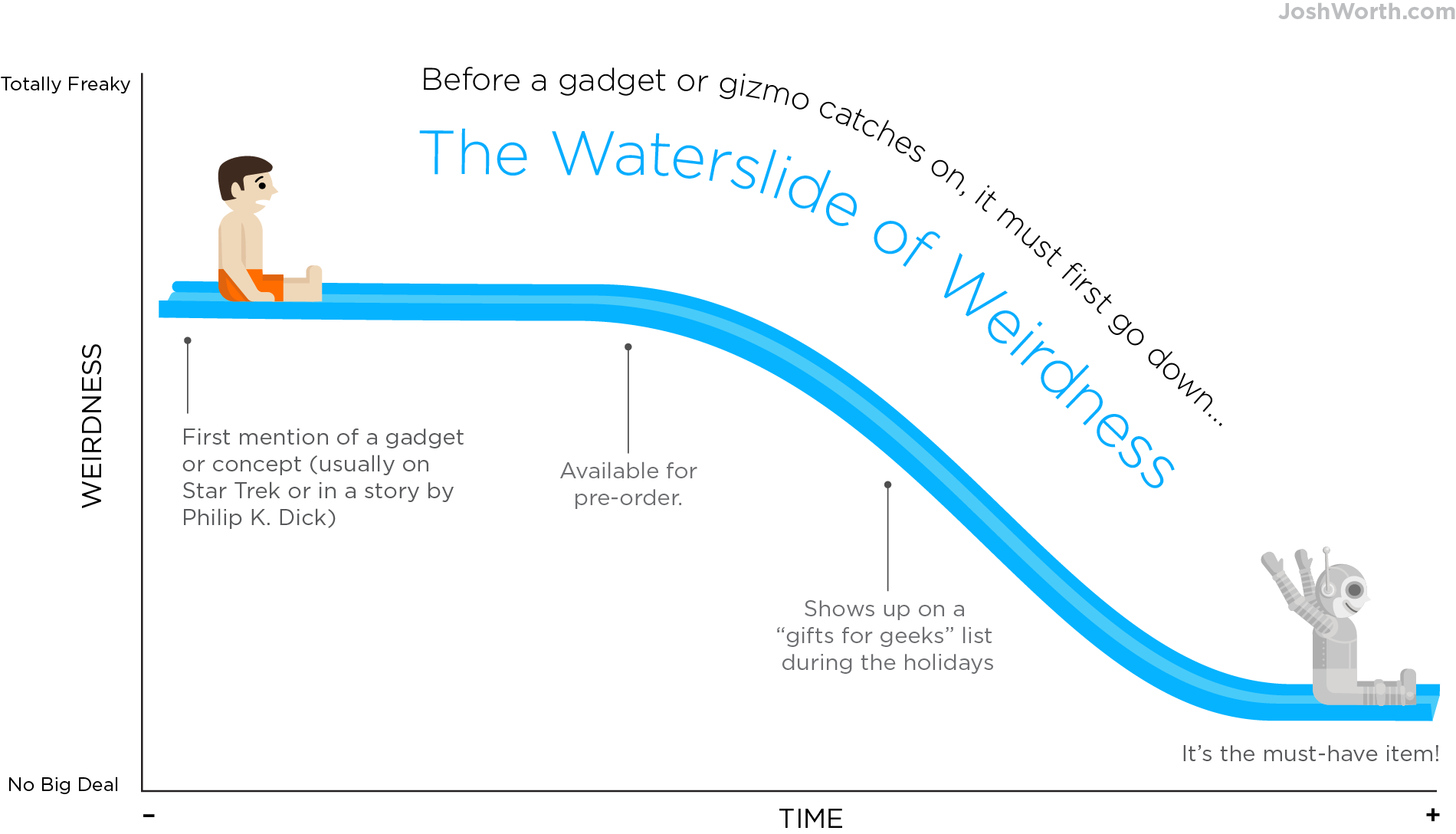Photo Courtesy of Charles Bodi
It wasn’t long ago that computing was solely the domain of nerd-boys like myself whose only hope of social redemption stemmed from Matthew Broderick’s romance with Ally Sheedy in War Games. Nowadays, if you’re not using a computer for your social interactions, you might as well be living in an Antarctic monastery.
And fifteen years ago, most of us would’ve been pretty shocked to see a waiting room full of people hopelessly enraptured by tiny glowing screens. But now we just shake our heads, post a snapshot to Instagram, and ask Siri to play The Times They Are A-Changin’.
Some pretty strange stuff is now more-or-less acceptable: Spending real money on a pair of shoes for your avatar, asking your phone if it’s raining in Denver, taking a photo of a taco, etc. There’s no question that technology is insinuating its way into our lives at an accelerating pace. But despite how adapted we’ve become to our shiny augmentations, it seems there are still a few lines we’re unwilling to cross.
The best example of where we’re at with this is Google Glass, which, in case you don’t know, is a pair of glasses that project a digital readout into your field of vision so you can always have important information when you need it. So, like, if you pass a Pizza Hut while you’re walking, you’ll always know they have 10% off all stuffed crust pizzas. It’s basically Google’s answer to the X-ray specs that were advertised in the back of comic books for so many years. The kids bought the x-Ray specs, put them on, looked at the cute girl in school, saw no underwear, and became angry at technology for being so limited. Now they are grown up and are enacting their sweet, sweet revenge.
Google Glass is a case where the technology is pretty much ready to go, but for most people, wearing crazy cyber-goggles in public is still just too weird. Adoption could probably be sped along with some better design, but even if the product was widely available, you wouldn’t be buying them for your mom for her birthday. At this point, the intrusion of such technology into our lives still feels kinda creepy.
Maybe it’s because we aren’t quite ready for the day when you put on a pair of glasses, and instead of seeing what’s in front of you, you’re seeing the view from your friend’s eyes as they walk through Shanghai, or you’re seeing the view from your own eyes when you visited Tomorrowland last year. While this may sound awesome to William Gibson fans, I’m guessing the average gadget buyer would prefer it if such mind-blowing possibilities remained in the realm of science fiction until further notice. Most of us have barely figured out how to do a video chat without at least one close-up of our nostrils.
Sometime soon, technological innovation will begin to outpace our ability to adapt to it. At which point, my monkey-level gut reactions will be all that’s preventing me from buying the style-o-matic closet that chooses my outfit based on the weather, my calendar events and my mood. And its inventors will be left wondering “why are some innovations easy to accept, and others just feel wrong?”
One place to start looking for an answer to this question is a place that robot-makers and other fans of digital biomorphism call the “uncanny valley.” The valley refers to a dip in the graph when you plot the human likeness of an object against its “familiarity” or how much you’d like to hang out with it.

If something doesn’t look remotely human, but still acts human, we love that – like Kermit the Frog. Most people would be fine having lunch with him. But as the object starts to look more and more human, we begin to get the willies. A ventriloquist’s dummy sits at the edge of the valley, the lady in this video sits at the bottom.
I suspect that somewhere close to the uncanny valley, is another form of creepiness that has more to do with how much technological immersion we can handle at any given time. This is a slightly different creepiness than the one found in the uncanny valley. The uncanny valley doesn’t seem to move with time. As far as we can tell, people have always been freaked out by dead-eyed clown puppets and they always will be. This other kind of weirdness fades over time as a technological concept percolates in the popular consciousness, until, quite suddenly, with the proper execution, it becomes something we should have had all along.
On a graph, this phenomenon would be the declining curve you get when you plot the time since a piece of technology was first mentioned in Star Trek against the likelihood of a user’s photo appearing on a single topic Tumblr page called Dorks with Newfangled Gadgets.
This curve would be less of a valley and more of an amusement park waterslide – a waterslide of weirdness. Time is the water rushing past our feet, scooting us ever closer to the possibilities offered by the new gadget. We’re up at the top where it’s dignified, trying to maintain some semblance of our former humanity, but the kids are rushing past us, diving in head-first, and our friends in line behind us are getting impatient. Finally, we say, “Why am I being such a fuddy-dud?”, put it in the Amazon cart and go sliding down into a new level of technological immersion. We hit the bottom and say, “This is great! I wonder if my mom would like one for her birthday?”
This waterslide might explain why people are generally uncomfortable when futurists like Ray Kurzweil spout off about how, in fifty years, we’ll all be uploading our souls to the cloud, recording our every action with retinal-implant cameras, and upgrading our brains to genius-level intellect. Those things might be great when we get there, but we haven’t gone down those slides yet.
And what about the vat-grown hamburger? The design-your-own baby gene-splicer app? How far away, and how steep are the waterslides for those innovations? Even if such things were made available today, we’d need some time to adapt to them before they attain widespread acceptance.
On the other hand, I’ll take a USB enabled hearing implant if I’m going deaf, and I would gladly rearrange my kids’ chromosomes if it would keep them healthy. Nothing weird about that. Those slides I’ve already gone down.
As neuroscience and bioengineering begin to converge with digital technology, we may soon reach a point when the fear of plummeting down the waterslide of weirdness is the only thing separating us from a completely cybernetic future – or maybe those willies we get when installing the latest neuro-implant will be the last vestige of our old-fashioned humanity.













“Humanity is overrated”.
… Said the spambot.
Very impressive! voted up.
Dear Sir,
We (The Brothers of the Frozen Waste) find your comment “Nowadays, if you’re not using a computer for your social interactions, you might as well be living in an Antarctic monastery”, somewhat insulting. Your insinuation that we here in Antarctica (all praise this blessed place) are incapable of using our computer for something other than housing our vast collection of taco pictures showed your lack of knowledge pertaining to frozen monastery history. We hope this will result in you doing a little research on the aforementioned topic, and if your ever in Antarctica (bless this desolate frozen wasteland) we would gladly show you around. Bring tacos.
Brother Ignatius Rutherford
Sacred Order of the Brothers of the Frozen Waste
I could spend hours on your blog it’s amazing